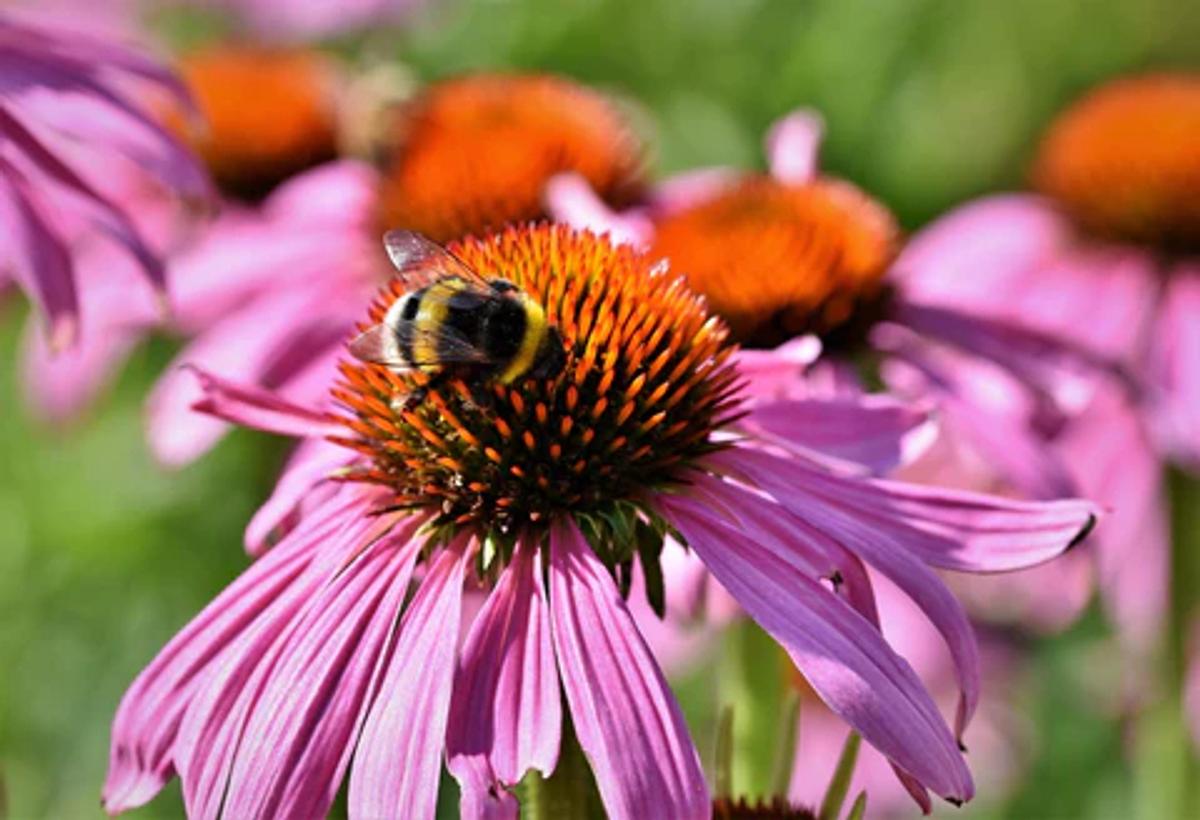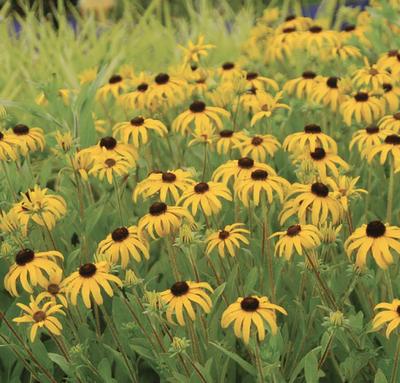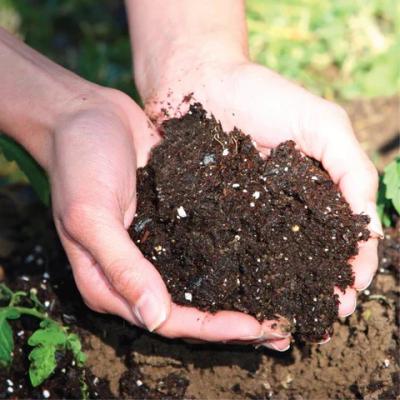
Share:
Iowa is home to a diverse range of ecosystems, including prairies, woodlands, wetlands, and savannas, which host a wide variety of native plant species. Native plants not only add beauty and interest to our landscapes but also play an essential role in supporting local ecosystems and wildlife. In this article, we will introduce you to some of the most attractive and beneficial native plants found in Iowa, along with information on their growing habits and the specific conditions they thrive in. Whether you're an experienced gardener or a first-time planter, this article will provide you with the inspiration and knowledge you need to incorporate native plants into your garden and help support Iowa's unique natural heritage. But first...
What are Native Plants?
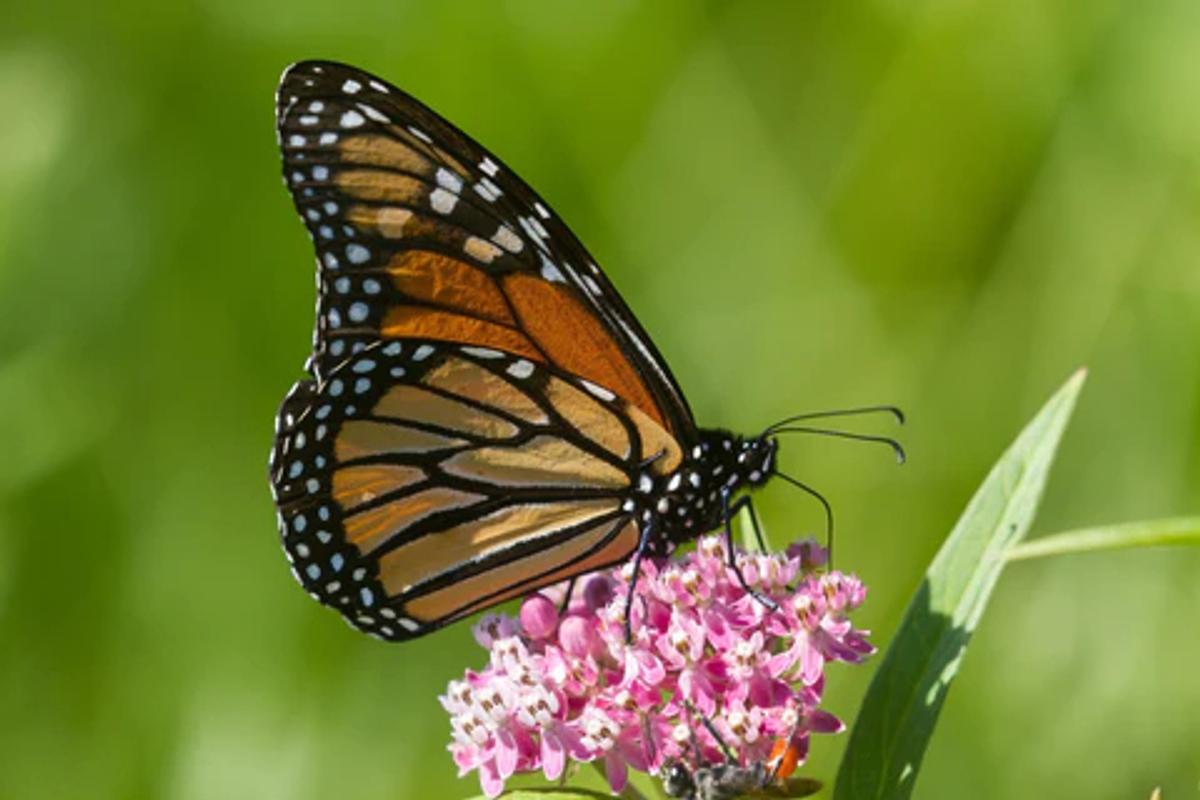
We consider plants to be native if they have grown and evolved in the same region for thousands of years. This means that the native species of plants with which we interact in Iowa today are the descendants of species that were supporting Iowa's ecosystems long before any of us were thinking about what to do with our yards. Over many centuries, these species have become especially well-adapted to thrive in Iowa's climate and soils, while providing essential habitat for wildlife. They also happen to be amazing additions to your garden or home landscape: they are generally resistant to local pests and suffer few disease problems, are generally drought tolerant (meaning less watering), require no fertilizer and are low maintenance. Finding the right native plants for your landscape will improve the look and ecological value of your property while providing you with the satisfaction of knowing you're doing something powerfully positive for the planet.
Why are Native Plants Important?
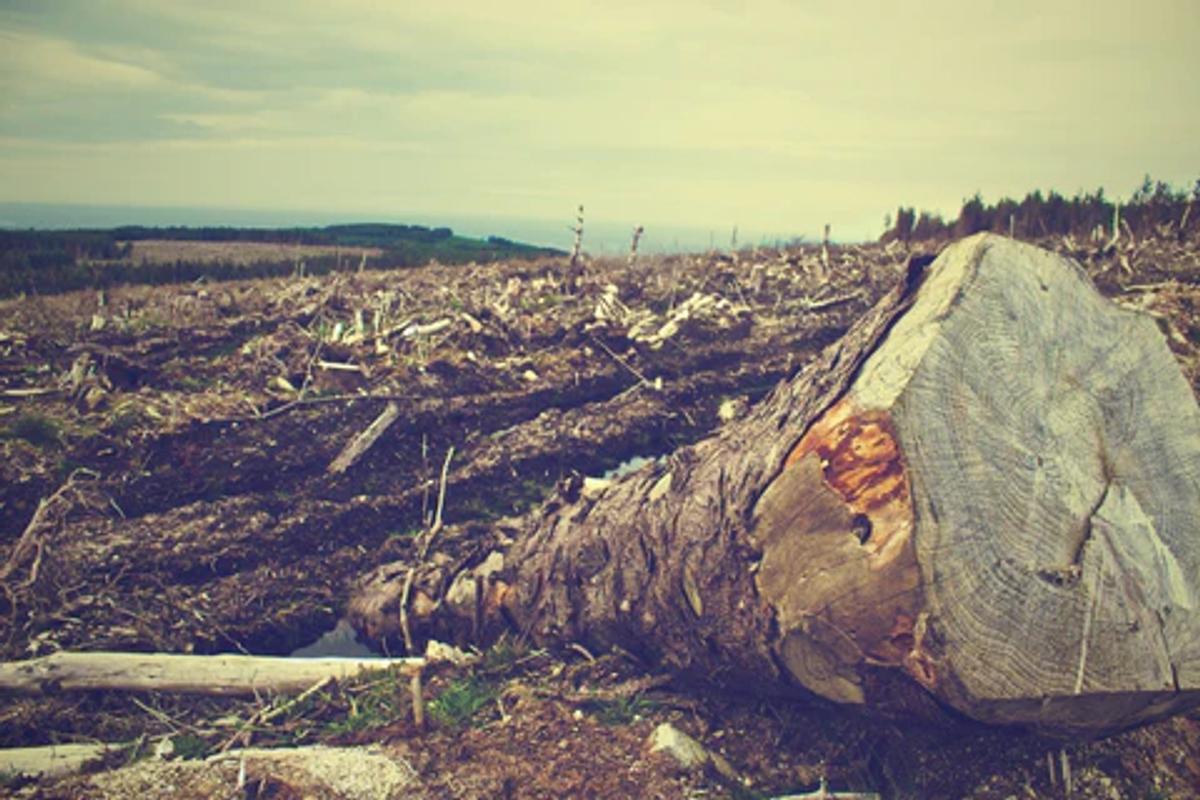
There has been an ongoing and incredible loss of animal life worldwide over the past 150 years. This is a tragedy that has affected almost every major group of organisms, including the many native bees, butterflies, birds, and other beneficial creatures that allow our natural world to function. A leading driver of this crash is land mismanagement: as humans, we've spent decades removing the kinds of plants our local wildlife and ecosystems need, and replacing them with non native plants that do very little or occasionally even nothing to support our environment in any meaningful way. In the worst cases, these non native plants may show themselves to be invasive species - escaping management and badly damaging our local wildlife and ecosystems.
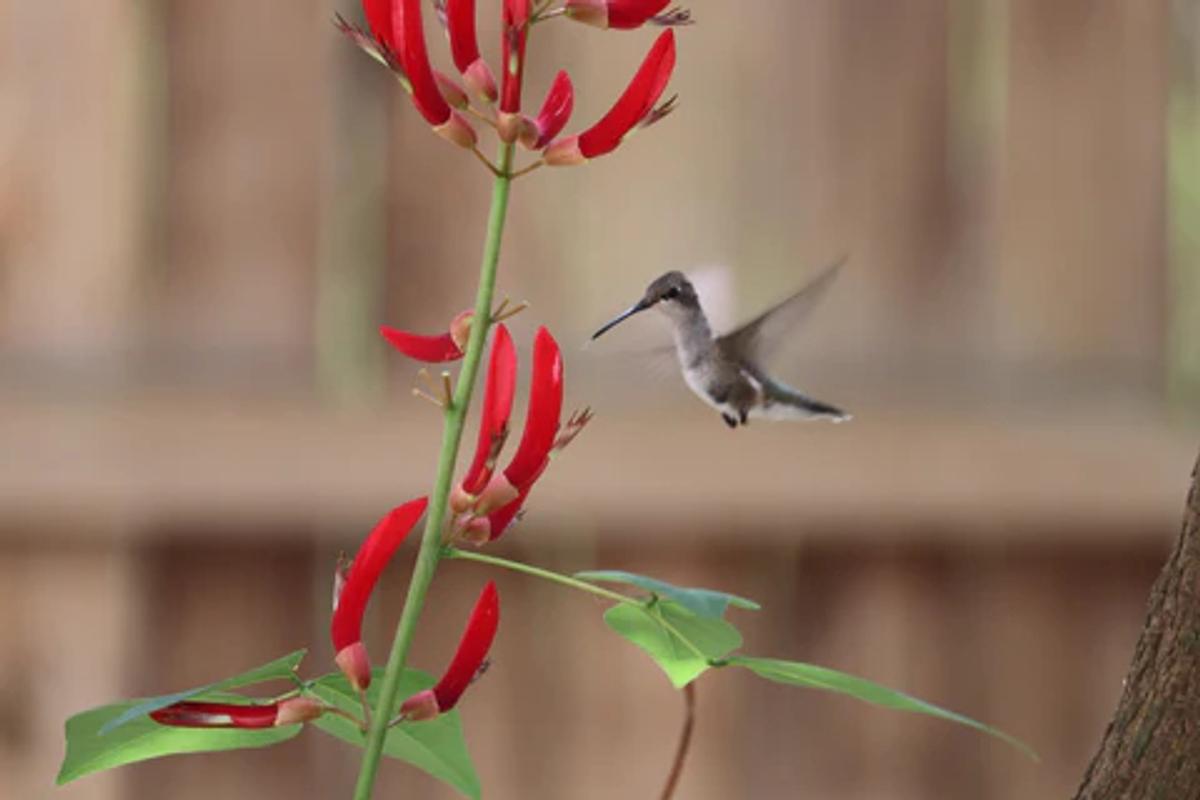
By contrast, native plants are adapted to all weather conditions and provide food and shelter for many bees, butterflies, birds, and other pollinators. With deep root systems on average, these species also sequester more carbon, cycle more nutrients into the soil, and provide more erosion control than turf grass and other ornamentals. Many species of native plants can survive in poor soils and are drought tolerant and deer resistant once established. Simply by adding a native garden bed or including some natives in your other landscapes you can directly help to reduce atmospheric CO2, create fertile soil, and reestablish a thriving environment. Read on below to see our starter list of perennial native plants for landscaping in Iowa.
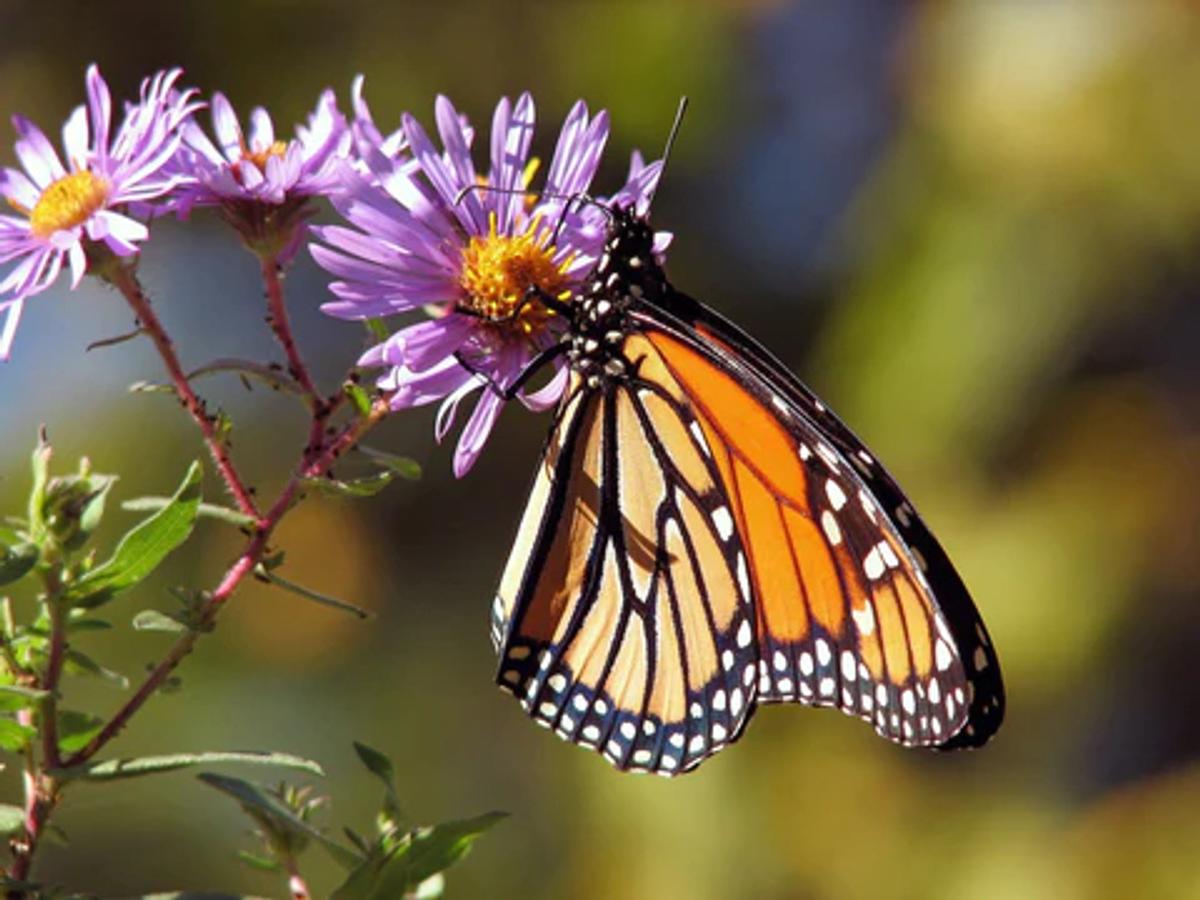
Native Plants of Iowa
Here is just a handful of Iowa native flowers which I've split up into three major categories of sun exposure for convenience. Any one of these species would be a great choice for your landscape, as they will bring beauty, be well-adapted to your local climate, and support many native pollinators and other insects; and most can be found in My Home Park's pre-designed gardens for Iowa.
Full Sun
Butterfly Weed
Asclepias tuberosa
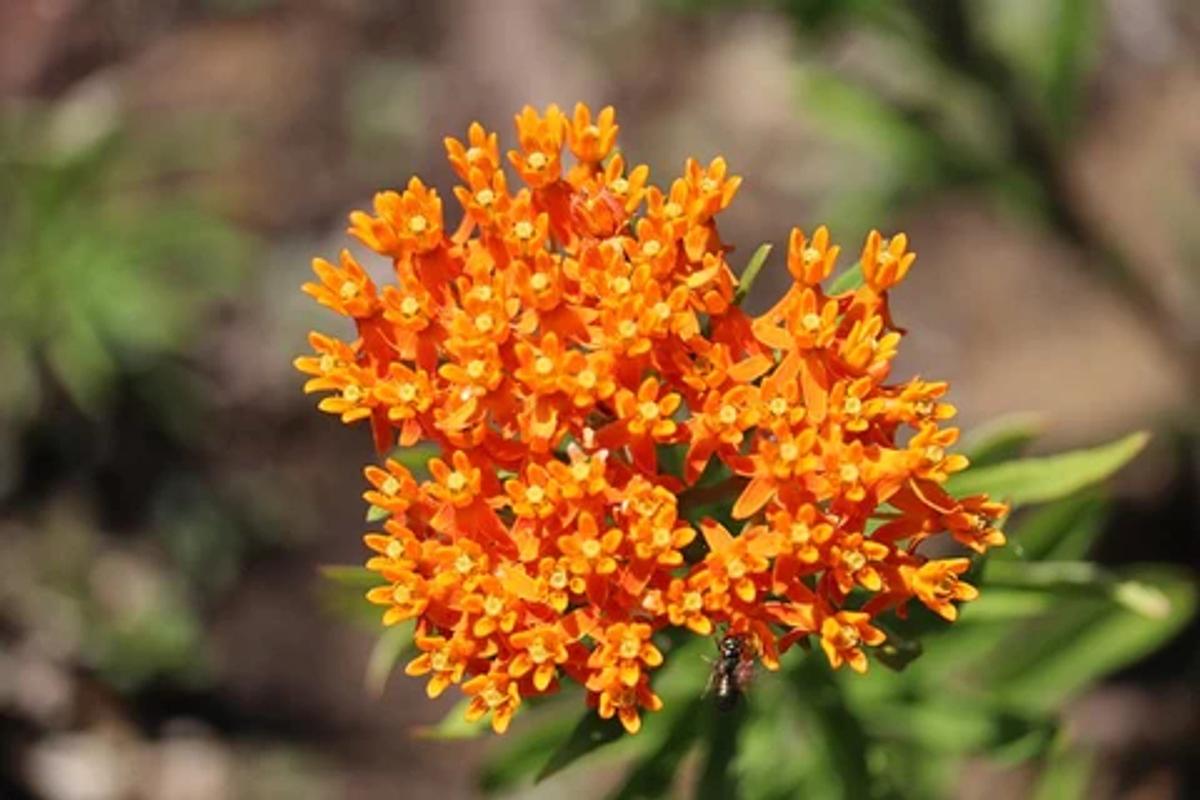
Butterfly Weed (aka Butterfly Milkweed) is a striking native plant with vibrant orange flowers that attract a variety of pollinators, including butterflies, bees, and hummingbirds. This plant typically grows to be 1-2 feet tall, with clusters of flowers atop sturdy stems that emerge from a basal rosette of leaves. The leaves are narrow and lance-shaped, and the stems are covered in fine hairs.
In addition to its ornamental value, this perennial summer bloomer is a particularly important as a host plant for the endangered Monarch Butterfly (Danaus plexippus) - which lay their eggs exclusively on plants in the Milkweed family (genus Asclepias).

Blue False Indigo
Baptisia australis

Blue False Indigo is a beautiful, native perennial plant that is commonly found in meadows, prairies, and open woods throughout eastern North America. It is a member of the pea family, and like other members of this family, it has unique flowers that are arranged in long spikes. It is a low-maintenance plant that is drought tolerant and adapts well to a wide range of soil types. It is also deer resistant, making it a great choice for gardeners who live in areas with high deer populations.
The flowers of Blue False Indigo are a beautiful, deep blue color and bloom in late spring to early summer, attracting pollinators. It is also an important host plant for several species of butterflies, including the Wild Indigo Duskywing (Erynnis baptisiae). The foliage is a beautiful blue-green color and is almost clover-like in appearance, adding interest even without flowers.
Black Eyed Susan
Rudbeckia hirta
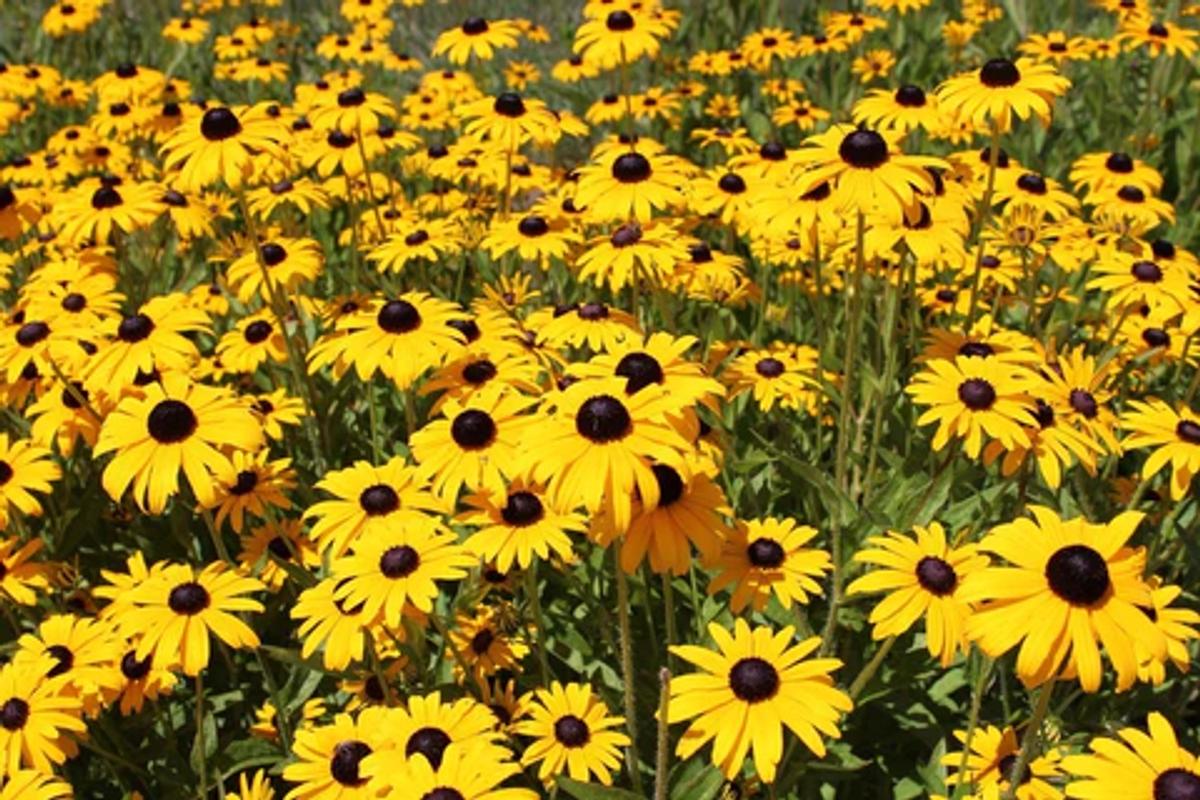
Black Eyed Susan is a cheerful and easy-to-grow perennial that typically grows to a height of 1-2 feet, with a spread of up to 2 feet, and features bright yellow-gold flowers with a dark brown center disk. The flowers bloom from midsummer to early fall and will attract many pollinators. Black Eyed Susan also tolerates drought and is deer-resistant, making it a great choice for low-maintenance gardens.
Showy Goldenrod
Solidago speciosa
Showy Goldenrod is a native perennial that is commonly found in the prairies and meadows of Iowa. It has tall, sturdy stems that can reach up to 6 feet in height and are covered with clusters of bright yellow flowers. The flowers bloom in late summer into fall, providing a burst of color and an important source of nectar for a wide variety of pollinators when other flowers and plants are starting to fade. The leaves are long and narrow, with a slightly rough texture, and basal leaves grow in a rosette at the bottom of the plant.
Wild Petunia
Ruellia humilis
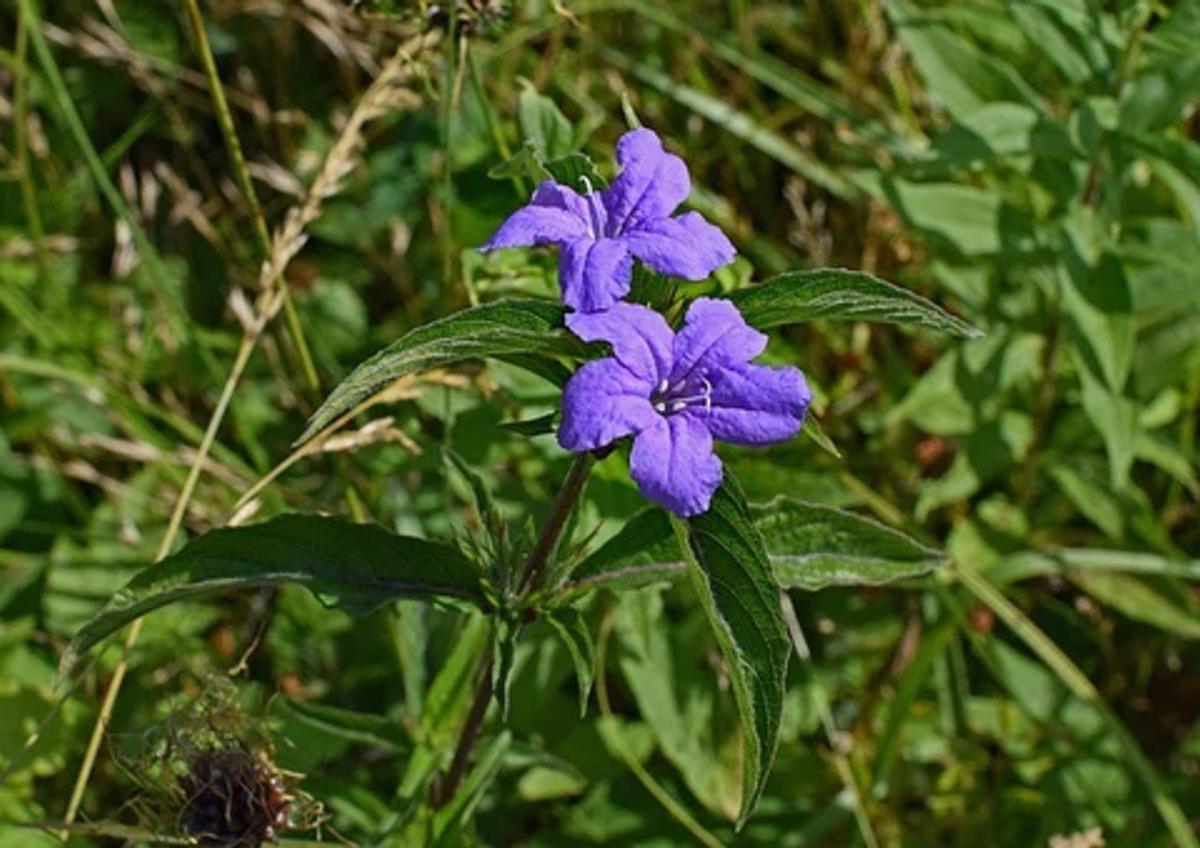
Wild Petunia is a charming native wildflower that is found in prairies and savannas throughout the Midwest, including Iowa. This low-growing pernnial typically reaches a height of 1-2 feet, with slender stems that hold clusters of delicate, trumpet-shaped purple or lavender flowers. It blooms from mid-summer to fall, providing a much-needed source of nectar for a variety of beneficial insects during the late-season nectar gap. The leaves are narrow and lance-shaped, with a soft, velvety texture.
Wild Petunia is a hardy and adaptable plant that prefers full sun to partial shade and well-drained soil. It can tolerate drought once established, making it a great choice for low-maintenance landscaping.
Purple Coneflower
Echinacea purpurea

Purple Coneflower is a beloved wildflower native to much of the central and eastern parts of North America. This perennial is renowned for its striking, large pink-purple daisy-like flowers with a spiky brown central cone. The flower heads bloom on tall, sturdy stems, and can reach up to 4 feet in height. The leaves of the Purple Coneflower are long and narrow with a coarse texture, and are a medium green color.
In addition to being a beautiful garden plant, Purple Coneflower is also an important source of nectar for bees, butterflies, and other pollinators; and it will attract birds that feed on its readily available seeds. Purple Coneflower prefers full sun and well-drained soil, but is tolerant of a range of growing conditions, making it a popular choice for gardeners and landscapers alike.
Sweet Flag
Acorus calmus
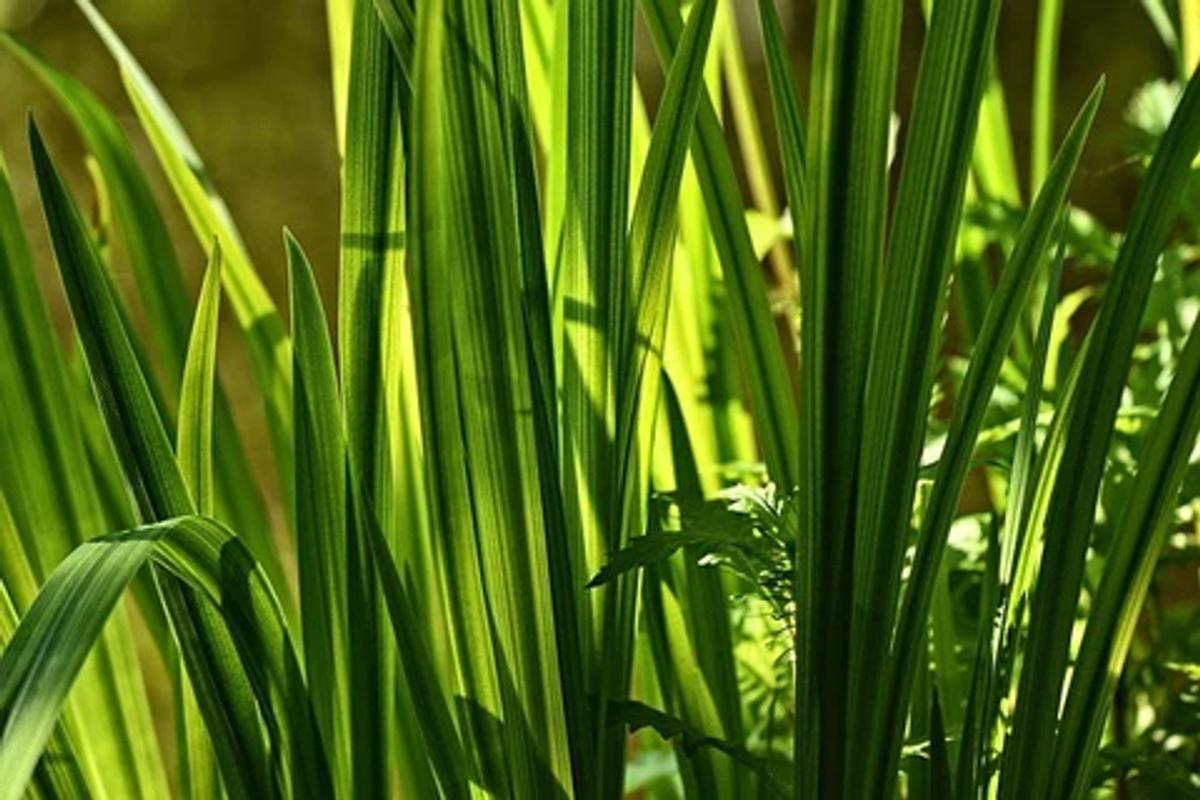
Sweet Flag is a native aquatic or wetland plant that typically grows 2 to 4 feet tall and has long, narrow leaves that are fragrant when crushed. The leaves are bright green and can grow up to 3 feet in length. It blooms in the summer and produces small, pale yellow flowers on a tall spike. Its roots have a spicy, sweet aroma and has been used for centuries in traditional medicine. In addition to its medicinal properties, Sweet Flag is also valued for its ornamental qualities and is often used in water gardens or planted along the edges of ponds and streams.
Common Yarrow
Achillea millefolium
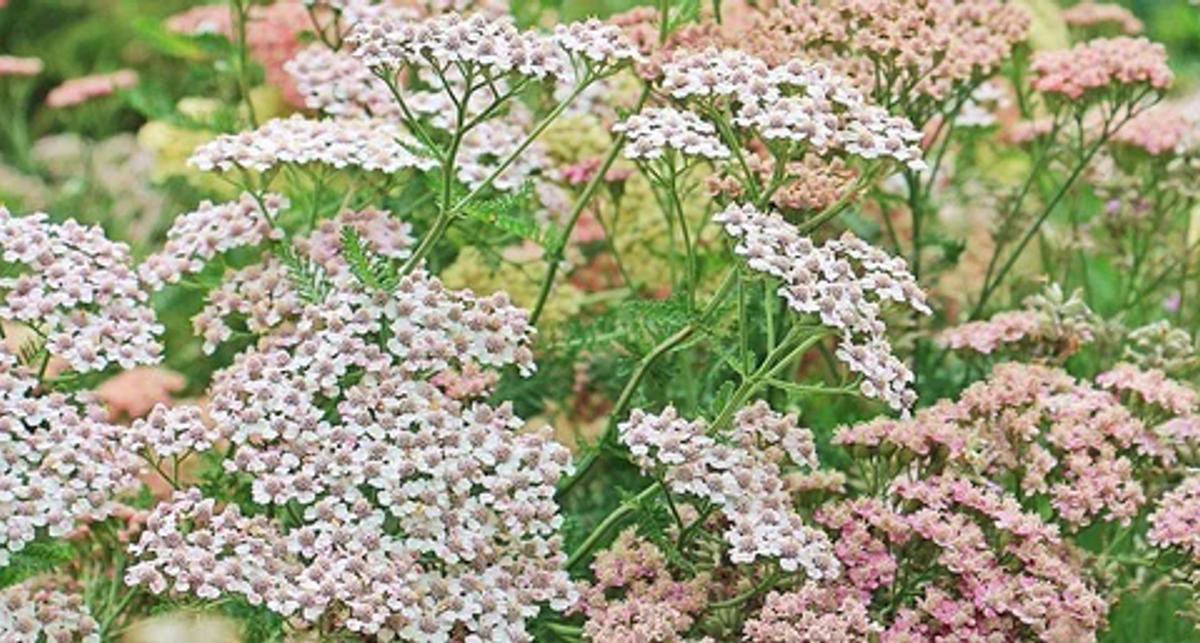
Common Yarrow, also known as Old Man's Pepper from the spicy taste of the plant's roots, is a perennial plant that is native to Europe but has naturalized in many other parts of the world, including North America. It typically grows to be about 1-3 feet tall and features clusters of small, pink or white flowers that bloom in the summer. Its dark green leaves are feathery and fern-like, giving it a delicate appearance. Common yarrow is often grown in gardens and is highly attractive to pollinators.
Monkey Flower
Mimulus ringens
Monkey Flower is found in moist meadows, swamps, and streambanks in eastern and central North America. The plant grows up to 3 feet tall and has lance-shaped leaves that are arranged oppositely on the stem. Its showy flowers are 2-lipped and tubular, with a deep blue-violet color and a yellow throat that is covered in reddish-purple spots. The flowers bloom from June to September and are attractive to a variety of pollinators, including bees, butterflies, and hummingbirds. Mimulus ringens is a great addition to rain gardens, wet meadows, or any other site with consistently moist soil.
Part Shade
Blue Flag Iris
Iris versicolor
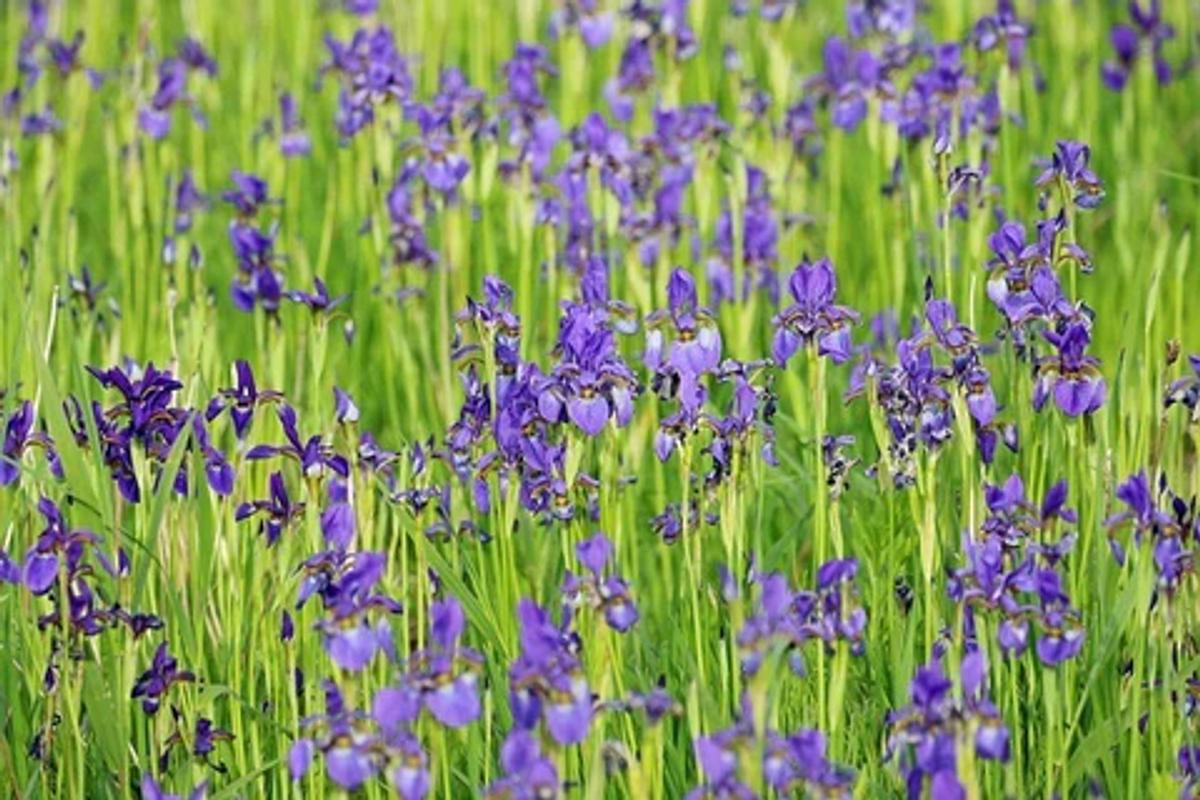
Blue Flag Iris is a native wetland plant that produces beautiful blue-violet flowers in the spring and summer. Its flowers have six petals that are typically deep blue or purple, with a yellow or white crest in the center. Blue Flag Iris has long, thin green leaves that grow up to 3 feet tall and are reminiscent of grass blades. It is often found growing in marshes, bogs, and other wetland areas, where its roots can help prevent soil erosion. Blue Flag Iris is also used as an ornamental plant in water gardens and other wetland landscaping projects, and its flowers are attractive to pollinators such as bees and butterflies.
Prairie Lily
Lilium philadelphicum
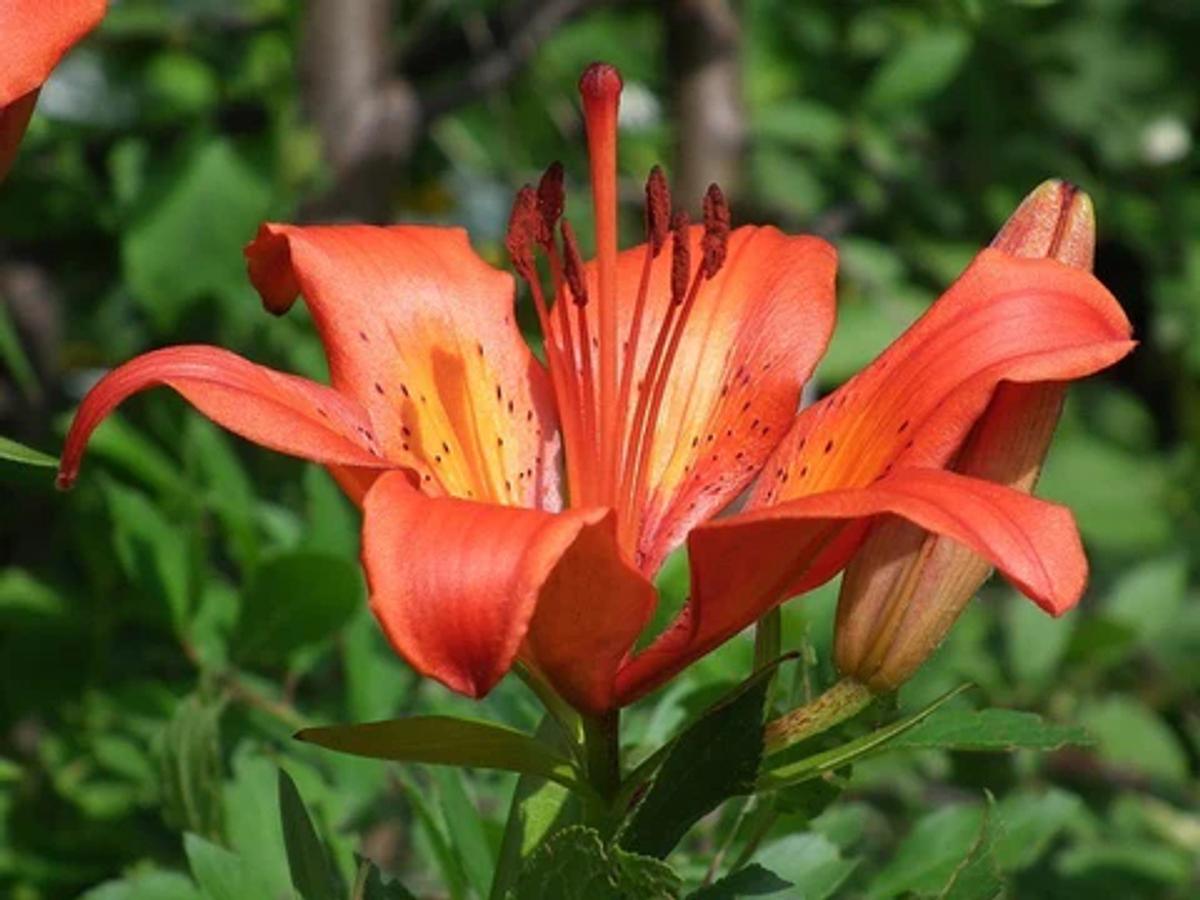
Prairie Lily, also known as Wood Lily and Western Red Lily, grows up to 2-3 feet tall and produces striking, bright red-orange flowers that bloom in the summer months. A member of the lily family, its flowers have six petals and are trumpet-shaped, with a pleasant fragrance that attracts bees, butterflies, and other pollinators.
The leaves of Prairie Lily are long and narrow, with a bluish-green color that complements the vivid flowers. This plant prefers well-drained or sandy soil and can tolerate both full sun and partial shade, making it a versatile choice for gardens and natural landscapes.
Joe Pye Weed
Eutrochium purpureum

Joe Pye Weed is known for its large, dome-shaped clusters of bright pink or purple flowers that bloom in mid to late summer. The flowers are attractive to many pollinators, including bees and butterflies. Joe Pye Weed has a stout, sturdy stem with whorled leaves that can reach up to a foot long. This plant can grow up to 7 feet in height, prefers moist soil, and can tolerate some shade, making it a great addition to rain gardens with very wet soils, meadows, and woodland edges.
Virginia Waterleaf
Hydrophyllum virginianum
Virginia Waterleaf is a lovely perennial wildflower known for its attractive foliage and delicate flowers. It grows up to 1-2 feet tall and 1-2 feet wide, with green, lobed leaves that have a distinctive water droplet shape. In the late spring and early summer, Virginia Waterleaf produces clusters of small, bell-shaped flowers that are pink or white in color. The flowers are held on tall, slender stems that rise above the foliage.
Virginia Waterleaf prefers moist, well-drained soils and can grow in full sun to partial shade. It is often found in woodland areas or along stream banks and is an important food source for a variety of pollinators. It is also deer-resistant, making it a great addition to gardens where deer are a problem.
Full Shade
Wild Ginger
Asarum canadense
Wild Ginger is a low-growing, attractive and unique plant that thrives in shaded areas, particularly in woodland gardens. Wild Ginger has a distinctive appearance with glossy, heart-shaped leaves that grow up to 6 inches across, and deep red to brown flowers that are hidden underneath the foliage. Wild Ginger spreads by underground rhizomes and forms a dense groundcover that can help to suppress weeds.
Foamflower
Tiarella cordifolia
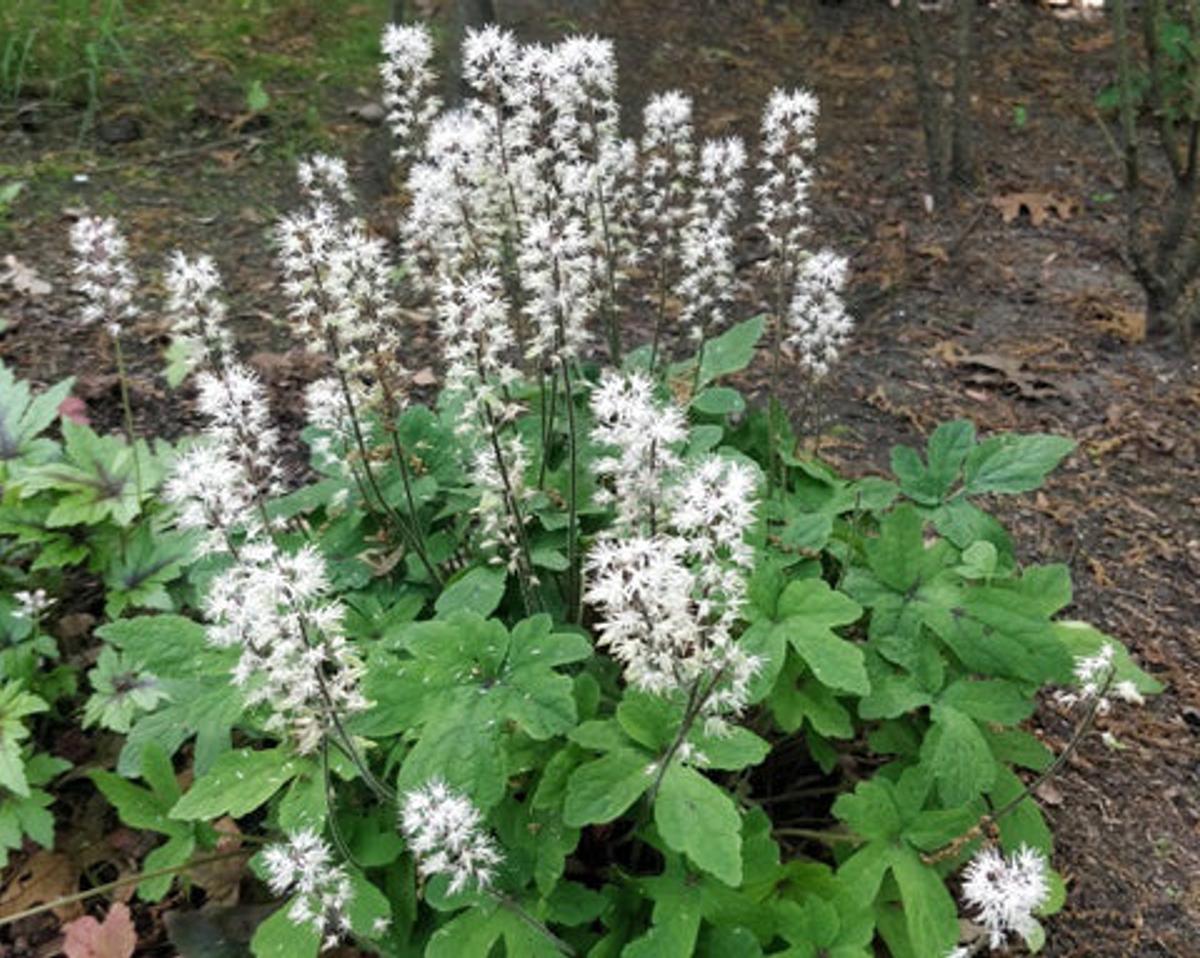
Foamflower is an easy-to-grow and delightful woodland plant which produces low-growing heart-shaped foliage with serrated edges. In Spring, this plant sends up slender flower stems that are adorned with tiny white or pink blossoms. The blossoms are clustered together in plumes, creating a frothy, foam-like effect that gives Foamflower its common name.
Foamflower is a shade-loving plant that prefers rich, moist soil, making it an excellent choice for any woodland garden or shady border. Its foliage stays attractive throughout the growing season, and the delicate flowers are a pollinator favorite.
What You Can Do Today

If you live in Iowa, My Home Park has over 35 pre-designed gardens that bring together diverse sets of Iowa natives produced by expert, organic growers in the Great Lakes region. These gardens are designed to bloom from early spring to fall, beautifying your landscape while supporting your environment. Check out details in our catalog for Iowa or explore our offerings for other states in the Great Lakes region to get started today!
